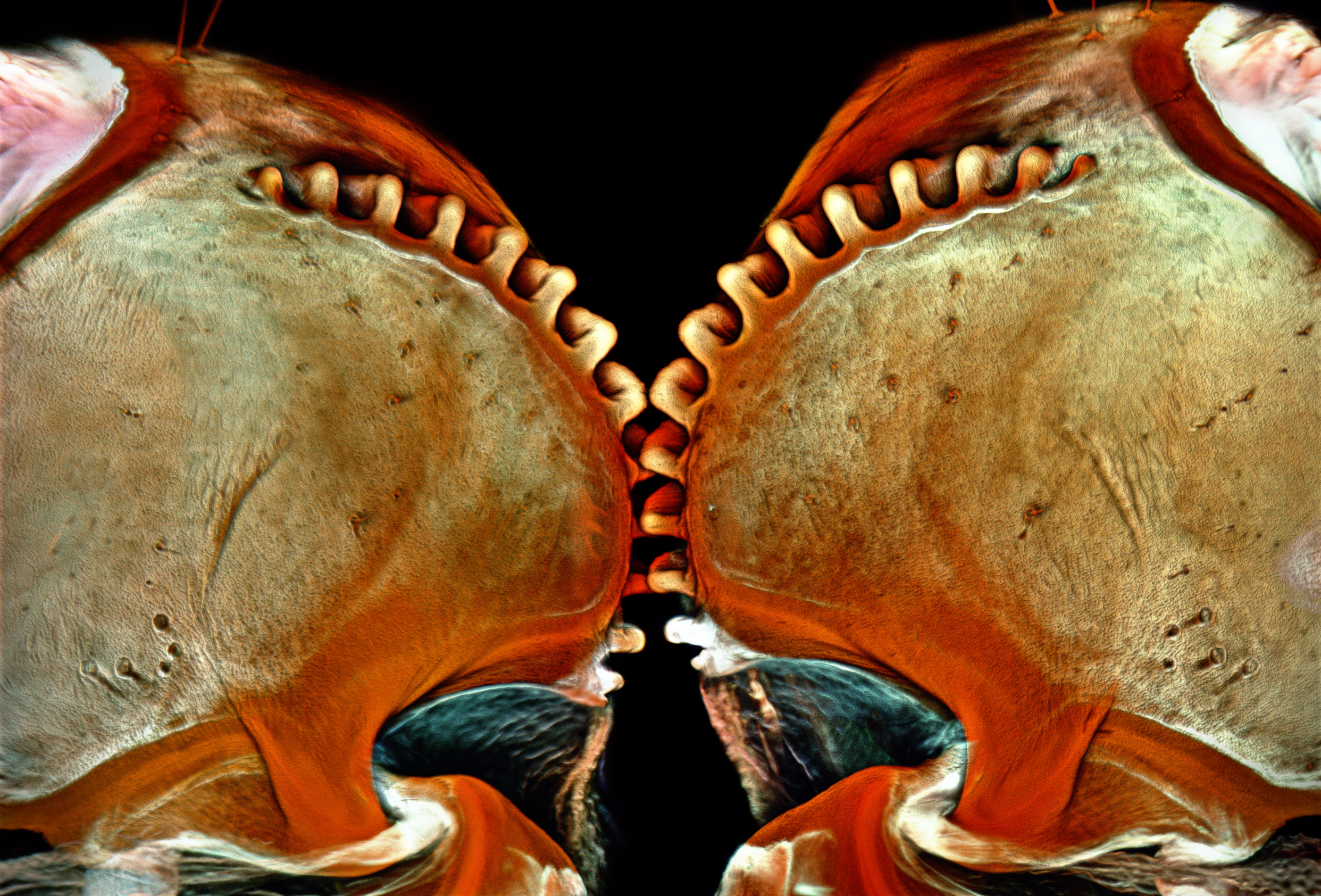This Insect’s Got Gears
The cogs allow the planthopper nymph to synchronize movement of its hind legs.

Igor Siwanowicz's image of planthopper nymph gears won 9th place in the Olympus BioScapes International Digital Imaging Competition. Photo courtesy of Igor Siwanowicz, HHMI Janelia Research Campus, Ashburn, Virginia.
Igor Siwanowicz, a research specialist at Janelia Farm Research Campus in Virginia, spends his working hours studying the neural anatomy of dragonflies. But he devotes much of his free time to nature photography, and is drawn to the abstract beauty of animals down to the microscopic level. When he read in 2013 that scientists had found a species of planthopper insect with the anatomical equivalent of mechanical gears—the first functional cogs ever discovered in nature—Siwanowicz desperately wanted to find and photograph one.
The gears have only been found in planthopper nymphs, rather than the adult form, and are made from the same material as the insects’ exoskeleton. These specialized structures, located on the inner part of the hind legs, enable nymphs to jump by synchronizing their hind leg movements to within 30 microseconds of each other—if one leg moves, the other does, too—allowing the insects to accelerate to around 400 to 500 times the force of gravity in just two milliseconds. “They have to synchronize their legs to move at exactly the same time, or else they’d go left or right instead of straight when they jump,” says Malcolm Burrows, a professor emeritus of zoology at the University of Cambridge in England and co-discoverer of the gears, found in a species called Issus coleoptratus.

Burrows suspects that adult planthoppers don’t have gears because if one cog breaks, the insects can no longer jump. “If you’re a nymph, you go through four or five molts, which gives you the opportunity to grow a new set of gears,” he says. “If you’re an adult and a gear breaks, you’re a goner.”
Planthoppers are widely distributed around the world, and Siwanowicz eventually spied on his front porch a species that, though different from what Burrows studied, also had gears. He brought the nymph, which he identified as a green conehead planthopper, back to his workplace for a closer look using confocal laser scanning microscopy, an imaging technique that uses lasers to scan three-dimensional samples.
Siwanowicz first stained the planthopper with two fluorescent dyes that bind to chitin (a material in an insect’s exoskeleton). A laser then excited the dyes so that they emitted light—“it’s the same physical phenomenon that makes black light posters from the ’70s glow,” according to Siwanowicz. The microscope, which registers that light, took a series of images of the tiny specimen at an even tinier scale, layer by layer. The final step required digitally assembling those images into a single photo. The colors you see in the featured image above represent the various ways that the insect’s exoskeleton bound to the dyes, reflecting different structural properties of chitin.
Siwanowicz’s photograph wound up winning ninth place in the 2014 Olympus BioScapes International Digital Imaging Competition. What’s more, the authors of the original Science paper have been so impressed with his gear images that they’ve discussed a future collaboration.
Rachel Nuwer is a freelance science journalist who writes for outlets such as The New York Times, the BBC and Smithsonian. She lives in Brooklyn.